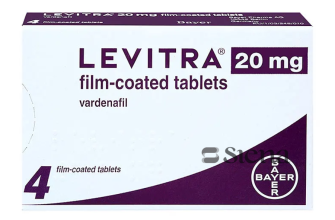Need antibiotics in Canada? Start by consulting your doctor. A proper diagnosis is paramount before starting any antibiotic treatment. They’ll determine the best course of action based on your specific needs and health history. This ensures the most effective treatment and minimizes the risk of complications.
Your physician will prescribe the appropriate antibiotic and provide clear instructions on dosage and duration of treatment. Follow these instructions carefully! Improper use of antibiotics contributes to antibiotic resistance, a serious global health concern. Always complete the full course of medication, even if you start feeling better sooner.
Legitimate pharmacies in Canada are your safest bet for purchasing prescription antibiotics. Avoid online pharmacies that don’t require a prescription or operate outside of regulatory frameworks. These sources may sell counterfeit or substandard medications, posing serious health risks. Check for licensing and accreditation before purchasing from any online pharmacy.
If cost is a concern, discuss options with your doctor or pharmacist. They might offer guidance on generic alternatives or programs that can help lower medication costs. Remember, your health is an investment; prioritize safe and effective treatment over cheaper, potentially dangerous, options.
- Antibiotics for Sale Canada: A Comprehensive Guide
- Finding a Doctor
- Prescription Filling
- Understanding Antibiotic Resistance
- Potential Side Effects
- Cost Considerations
- Additional Resources
- Legal Requirements for Obtaining Antibiotics in Canada
- Finding Reputable Canadian Pharmacies for Prescription Antibiotics
- Confirming Pharmacy Legitimacy
- Using Your Prescription Safely
- Understanding Prescription Requirements and Doctor Consultations
- Potential Risks of Buying Antibiotics Online Without a Prescription
- Safe Disposal of Unused or Expired Antibiotics
- Household Disposal Methods (if Take-Back Unavailable)
- Cost Comparison of Antibiotics in Canada
Antibiotics for Sale Canada: A Comprehensive Guide
Purchase antibiotics in Canada only with a valid prescription from a licensed healthcare professional. This is crucial for your health and safety. Avoid purchasing antibiotics online from unregulated sources; they may be counterfeit, ineffective, or even harmful.
Finding a Doctor
To obtain a prescription, schedule an appointment with your family doctor or a walk-in clinic. Clearly describe your symptoms. They will assess your condition and determine if antibiotics are necessary. Many clinics offer online booking for convenience.
Prescription Filling
Once you have a prescription, you can fill it at any pharmacy registered with Health Canada. Pharmacists are trained to answer your questions regarding your medication and its proper usage. Always ask if you have any doubts or concerns.
Understanding Antibiotic Resistance
Only use antibiotics when prescribed. Inappropriate use contributes to antibiotic resistance, making these life-saving medications less effective against bacterial infections. Follow your doctor’s instructions meticulously regarding dosage and duration of treatment.
Potential Side Effects
Be aware of potential side effects, such as nausea, diarrhea, or allergic reactions. Report any unusual symptoms to your doctor or pharmacist immediately. They can advise you on managing these side effects and ensuring safe medication use.
Cost Considerations
The cost of antibiotics varies depending on the specific medication and your insurance coverage. Ask your pharmacist about potential cost-saving options, such as generic alternatives. Many provincial health plans partially cover prescription drug costs.
Additional Resources
For further information on antibiotics and safe medication practices, consult Health Canada’s website or speak with a qualified healthcare professional. They can provide personalized advice and guidance.
Legal Requirements for Obtaining Antibiotics in Canada
You need a prescription from a licensed Canadian doctor or nurse practitioner to buy antibiotics.
This prescription must be current and valid. Don’t try to use an old prescription.
- Pharmacists will verify your prescription details with the prescribing physician’s office.
- They will also check to ensure your personal information is accurate.
Buying antibiotics online without a prescription from a Canadian healthcare professional is illegal and carries significant risks. These include receiving counterfeit or ineffective drugs, potentially harming your health.
Always seek medical advice before using antibiotics. Improper use contributes to antibiotic resistance, making future treatment more challenging.
- Describe your symptoms clearly to your doctor.
- Follow their instructions precisely regarding dosage and duration of treatment.
- Never share your antibiotics with others, even if they have similar symptoms.
For further information, contact Health Canada or your provincial health authority.
Finding Reputable Canadian Pharmacies for Prescription Antibiotics
Verify the pharmacy’s license with your provincial regulatory authority. Each province maintains a public registry of licensed pharmacies; check these resources directly to confirm legitimacy. Don’t rely solely on online directories.
Confirming Pharmacy Legitimacy
Look for a physical address and contact information easily accessible on the website. Legitimate pharmacies will openly provide this detail. Avoid pharmacies that lack transparent contact details or only offer virtual interactions.
Check for secure website protocols (HTTPS). This ensures your data is encrypted during transactions, protecting your personal and financial information. Look for the padlock icon in your browser’s address bar.
Read independent customer reviews. Sites like Trustpilot can offer insights into other customers’ experiences. Note that while reviews can be helpful, they should be considered alongside other verification methods.
Contact the pharmacy directly with questions. Ask about their accreditation, licensing, and medication sourcing. Reputable pharmacies will be happy to answer your questions and provide supporting documentation.
Using Your Prescription Safely
Never order antibiotics online without a valid prescription from a licensed Canadian physician. Attempting to obtain antibiotics without a prescription is illegal and risky. Ensure your doctor has authorized your specific antibiotic choice.
Be wary of suspiciously low prices. Unusually cheap antibiotics may indicate counterfeit or substandard medications. A competitive price is acceptable, but extreme discounts should raise concerns.
Understanding Prescription Requirements and Doctor Consultations
Always obtain antibiotics from a licensed Canadian physician. You need a prescription; no reputable pharmacy will sell them otherwise. This protects you from counterfeit drugs and ensures appropriate treatment.
Schedule a consultation. Many clinics offer telehealth appointments for convenience. During this consultation, honestly describe your symptoms. This allows your doctor to accurately diagnose your condition and determine the correct antibiotic, if needed. Providing a complete medical history, including allergies, is crucial for safe treatment.
Expect questions about your symptoms’ duration, severity, and any other relevant medical information. Your doctor might also perform a physical examination or order tests to confirm the diagnosis. Follow their instructions precisely regarding medication dosage and duration of treatment.
Antibiotics are powerful medicines. Never share them; use them only as prescribed. Incomplete treatment can lead to antibiotic resistance, making future infections harder to treat. If you experience side effects, contact your doctor immediately. Careful adherence is key to successful treatment and preventing complications.
Canadian pharmacies follow strict regulations. They verify prescriptions to ensure they’re valid and prevent misuse. Choose a licensed Canadian pharmacy to guarantee the legitimacy of your prescription medications.
Potential Risks of Buying Antibiotics Online Without a Prescription
Avoid buying antibiotics online without a prescription. Doing so carries significant health risks.
First, you risk receiving counterfeit drugs. These medications may contain incorrect dosages, harmful ingredients, or no active drug at all. This can lead to treatment failure, prolonging your illness and potentially causing serious complications.
Second, incorrect antibiotic use fuels antibiotic resistance. Taking the wrong antibiotic or not completing the prescribed course allows bacteria to evolve and become resistant to treatment. This makes infections harder to treat, leading to longer illnesses and increased risk of severe complications.
Third, without a doctor’s assessment, you could be taking the wrong antibiotic for your condition. This can mask symptoms of a more serious illness, delaying proper treatment and potentially worsening your health.
Finally, online pharmacies often lack oversight and safety protocols. They may not require a valid prescription, resulting in unsafe practices and increased potential for harmful interactions with other medications.
| Risk | Consequence |
|---|---|
| Counterfeit drugs | Treatment failure, serious complications |
| Incorrect antibiotic use | Antibiotic resistance, prolonged illness |
| Wrong antibiotic for condition | Delayed treatment, worsening health |
| Lack of pharmacy oversight | Unsafe practices, harmful interactions |
Always consult a doctor before using antibiotics. They can diagnose your condition accurately, prescribe the correct medication, and monitor your treatment for optimal results and safety. Your health is paramount.
Safe Disposal of Unused or Expired Antibiotics
Never flush antibiotics down the toilet or drain. This contaminates water supplies. Instead, utilize your local pharmacy’s drug take-back program. Many pharmacies offer convenient drop-off boxes for unused or expired medications. Check their website or call ahead to confirm participation and hours.
Household Disposal Methods (if Take-Back Unavailable)
If a take-back program isn’t readily available, mix antibiotics with undesirable substances like used coffee grounds or kitty litter. This makes the medication less appealing. Seal the mixture tightly in a sealed, non-recyclable container (like an empty plastic bottle) and discard it in the regular trash. Be sure to remove any identifying information from the medication packaging before disposal. This prevents misuse.
For liquid antibiotics, follow the same procedure. Always thoroughly clean any containers used in this process and ensure children and pets cannot access them.
Cost Comparison of Antibiotics in Canada
Determining the exact cost of antibiotics in Canada requires knowing the specific antibiotic, dosage, and pharmacy. Prices vary significantly. Generic versions are generally much cheaper than brand-name medications. For example, a course of amoxicillin (generic) might cost between $10 and $30, while a brand-name equivalent could be significantly more expensive. Similarly, a course of ciprofloxacin (generic) typically ranges from $15 to $40, depending on the pharmacy and quantity.
Factors Affecting Cost: Pharmacy location (urban vs. rural), insurance coverage, and the drug’s manufacturer all influence price. Provincial drug plans offer varying levels of coverage; some provide extensive drug benefits, while others have limited coverage, leading to higher out-of-pocket expenses for patients.
Recommendation: Always compare prices at different pharmacies. Utilize online pharmacy price comparison tools. Check your insurance coverage before purchasing medication to understand your potential costs. Consider using a generic version whenever possible to save money; they usually offer the same therapeutic effect.
Example Price Range (Approximate):
- Amoxicillin (generic): $10 – $30
- Ciprofloxacin (generic): $15 – $40
- Azithromycin (generic): $20 – $50
Disclaimer: These price ranges are estimates and can vary considerably. Consult your pharmacist or physician for accurate pricing information for your specific prescription.










